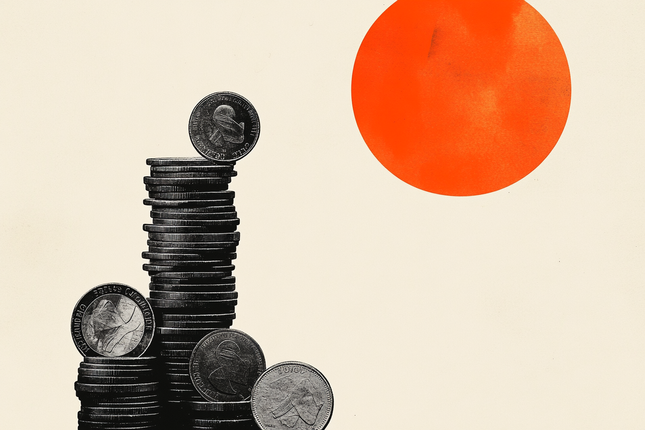Opening a Self-Invested Personal Pension (SIPP) can be an excellent way of boosting your retirement savings. There are many benefits to SIPPs, including tax-free growth and government top-ups, but how can you make the most of your SIPP’s potential to make you money?
Tax relief is a valuable asset to any investment strategy, and there are many ways that you can use this perk to your advantage when it comes to building a nest egg for retirement.
But how do SIPPs actually work? And how can you gain as much value as possible from your personal pension? Let’s take a look at three quick and easy tips to build wealth with the help of a SIPP:
What is a SIPP?
In recent years, SIPPs have become an increasingly popular way of saving for retirement. In 2023, more than £205 billion in assets were held in SIPPs with over 1.7 million people using Self-Invested Personal Pensions.
In a nutshell, a SIPP allows you to save, invest, and build a pot of money ahead of your retirement. While it works similarly to traditional pensions, a Self-Invested Personal Pension offers greater flexibility and control over the type of investments that you can choose to add to your nest egg.
While SIPPs are a popular choice among those with experience in investing, they’re becoming more commonplace among self-employed individuals who don’t have a typical workplace pension and those keen to invest alongside their workplace pensions.
So, how can you make SIPPs work to your advantage? Let’s take a look at three quick tips that can help you build wealth with the help of a Self-Invested Personal Pension:
1. Track and consolidate your existing pensions
The average adult in the UK will hold nine jobs in their lifetime, and this will often mean a lot of different pensions created with lots of different providers.
This means that if you’ve had multiple employers in the past, you may have multiple pensions that are difficult to locate and utilise to their full potential.
By combining your pensions into a SIPP that suits your risk tolerance and financial goals, you can rescue your funds from the ether and really get them to work for you.
With this in mind, the first quick tip to build your wealth with a SIPP is to consolidate your pensions. But how can you find them?
Discovering your old pensions can be tedious, especially if you’ve been working for many years. If you don’t know your old providers, then there are resources like the government’s Pension Tracking Service that can help you locate your old pensions.
Once you find your providers, it’s much easier to trace a pension to add to your SIPP. Typically, your provider will post annual statements to you, and this is usually the case even when you no longer pay into a personal pension. These documents will have your policy number, which you can use to track and consolidate your pensions.
If you can’t find a statement, you’re likely to be able to access your pension by answering some personal and security questions from your provider.
2. Stagger your tax-free cash
One of the best features of pensions is that you’re able to withdraw 25% of your total funds tax-free when you reach retirement age, up to a maximum of £268,275. This means that when you turn 55 (soon to be 57 following retirement age changes from 2028) you’ll be able to access your savings.
However, to preserve your investment growth, you can use a SIPP to adopt a more staggered approach and withdraw your tax-free cash in stages.
This means that you won’t have to commit to either a drawdown or an annuity, and you can retain a higher proportion of your savings to ensure that the amount you have available to withdraw tax-free will increase over time.
In addition to this, any pensions you haven’t drawn remain exempt from inheritance tax, unlike the money in your bank account.
3. Flexibility to avoid value traps
The added control that you’re afforded when using Self-Invested Personal Pensions can be a great way of managing the types of investments you’re making ahead of your retirement.
Because SIPPs are long-term focused, you can arrange your investments to focus solely on assets like stocks and shares that have historically demonstrated significant long-term outperformance, as opposed to falling into the temptation to buy into a stock that’s on a roll through a different investment strategy.
Value traps can be a pervasive danger to investors who are seeking short-term gains, so using a SIPP paves the way for a more sustainable mindset that helps to protect against more risky assets.
Whether you intend to curate your SIPP and its underlying investments yourself or collaborate with a financial adviser, this approach can be invaluable in protecting against the temptation of buying short-term performers.
Taking control of your retirement pot
The reason SIPPs are becoming increasingly popular is that they offer a flexible approach when saving for retirement that puts you in control of your pot.
Unlike workplace pensions which are typically more passive in structure, you can use SIPPs to adopt a vast range of investment strategies that suit your specific saving goals.
If you have the time and knowledge to positively influence your retirement planning, these three quick tips can be a great way of building your wealth and setting up a nest egg for the future on your terms.
All views and opinions expressed in this article are the opinions of the author and not FXStreet. Trading cryptocurrencies or related products involves risk. This is not an endorsement to invest in or trade any of the cryptocurrencies, stocks or companies mentioned in this article.
Editors’ Picks

EUR/USD Price Annual Forecast: Growth to displace central banks from the limelight in 2026 Premium
What a year! Donald Trump’s return to the United States (US) Presidency was no doubt what led financial markets throughout 2025. His not-always-unexpected or surprising decisions shaped investors’ sentiment, or better said, unprecedented uncertainty.

Gold Price Annual Forecast: 2026 could see new record-highs but a 2025-like rally is unlikely Premium
Gold hit multiple new record highs throughout 2025. Trade-war fears, geopolitical instability and monetary easing in major economies were the main drivers behind Gold’s rally.

GBP/USD Price Annual Forecast: Will 2026 be another bullish year for Pound Sterling? Premium
Having wrapped up 2025 on a positive note, the Pound Sterling (GBP) eyes another meaningful and upbeat year against the US Dollar (USD) at the start of 2026.

US Dollar Price Annual Forecast: 2026 set to be a year of transition, not capitulation Premium
The US Dollar (USD) enters the new year at a crossroads. After several years of sustained strength driven by US growth outperformance, aggressive Federal Reserve (Fed) tightening, and recurrent episodes of global risk aversion, the conditions that underpinned broad-based USD appreciation are beginning to erode, but not collapse.

Bitcoin Price Annual Forecast: BTC holds long-term bullish structure heading into 2026
Bitcoin (BTC) is wrapping up 2025 as one of its most eventful years, defined by unprecedented institutional participation, major regulatory developments, and extreme price volatility.
RECOMMENDED LESSONS
Making money in forex is easy if you know how the bankers trade!
I’m often mystified in my educational forex articles why so many traders struggle to make consistent money out of forex trading. The answer has more to do with what they don’t know than what they do know. After working in investment banks for 20 years many of which were as a Chief trader its second knowledge how to extract cash out of the market.
5 Forex News Events You Need To Know
In the fast moving world of currency markets where huge moves can seemingly come from nowhere, it is extremely important for new traders to learn about the various economic indicators and forex news events and releases that shape the markets. Indeed, quickly getting a handle on which data to look out for, what it means, and how to trade it can see new traders quickly become far more profitable and sets up the road to long term success.
Top 10 Chart Patterns Every Trader Should Know
Chart patterns are one of the most effective trading tools for a trader. They are pure price-action, and form on the basis of underlying buying and selling pressure. Chart patterns have a proven track-record, and traders use them to identify continuation or reversal signals, to open positions and identify price targets.
7 Ways to Avoid Forex Scams
The forex industry is recently seeing more and more scams. Here are 7 ways to avoid losing your money in such scams: Forex scams are becoming frequent. Michael Greenberg reports on luxurious expenses, including a submarine bought from the money taken from forex traders. Here’s another report of a forex fraud. So, how can we avoid falling in such forex scams?
What Are the 10 Fatal Mistakes Traders Make
Trading is exciting. Trading is hard. Trading is extremely hard. Some say that it takes more than 10,000 hours to master. Others believe that trading is the way to quick riches. They might be both wrong. What is important to know that no matter how experienced you are, mistakes will be part of the trading process.
The challenge: Timing the market and trader psychology
Successful trading often comes down to timing – entering and exiting trades at the right moments. Yet timing the market is notoriously difficult, largely because human psychology can derail even the best plans. Two powerful emotions in particular – fear and greed – tend to drive trading decisions off course.


